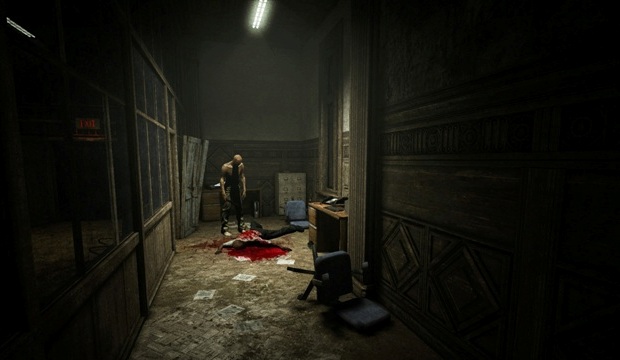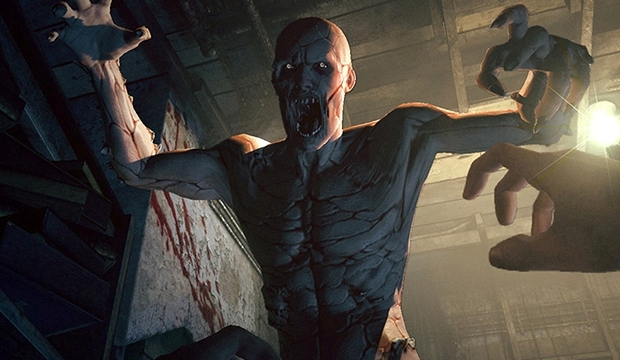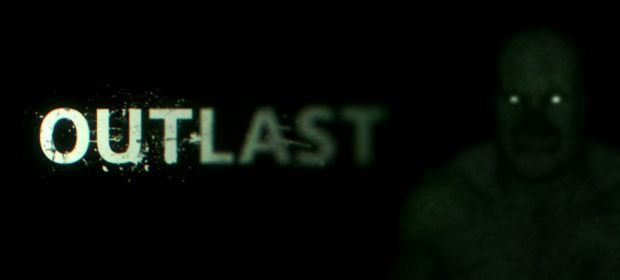These last two weeks have seen two major horror releases with Amnesia: A Machine for Pigs and Outlast. Both have striking similarities on the surface, and may appear to be almost identical, but that couldn’t be farther from the truth. Where Amnesia focused more on The Shining-influenced psychological terror, Outlast opts for the gore-laden Saw approach.
You play puppet master to marionette Miles Upshur, an investigative reporter tasked with uncovering the truth behind the disturbing rumours about an abandoned mental institution in the Colorado Mountains. The aptly named Mount Massive Asylum was shut in the early 70s amid controversy but has been reopened by the shady multinational Murkoff Corporation, and has since been shrouded in secrecy. Following an anonymous inside tip, Upshur sets out to learn what is really going on and almost immediately realises that this was a very, very bad idea.

His first mistake was not bringing a flashlight. Well, actually, not bringing a flashlight probably comes after taking the job in the first place, choosing to come at night, and not bringing a gun, but you get the point. Seriously, who the hell decides to break into a remote madhouse, at night and without a torch? Clearly he has never played Silent Hill or Alan Wake. But he did bring his trusty camcorder, equipped with night-vision mode, henceforth known as “make-every-damn-thing-look-ten-times-scarier” mode.
This camcorder is Outlast’s hook, its unique selling point (for all you marketing whizzes out there), and it’s brilliantly done. Right-click raises the camera, while tapping F switches to MEDTLTTS mode – and it’s in this view that the game really shines. The atmosphere created by something so simple as a filter and some audio tricks is incredible. The visual effect is very realistic and complimented beautifully by the subtle audio distortions from the camera’s mic, and the soft buzz from the lens as you zoom in and out. The glare from the inmates’ eyes as they peer at you from dark corners, and the low-fi amplification of your breathing and footsteps all add to this atmosphere and instantly creates tension. Your cam runs on batteries that only deplete when in night-vision mode, and spares can be picked up along the way; thankfully, they’re plentiful enough so that you never really have to manage your supply.
And so, onwards you go, deeper and deeper into the mansion. You don’t get very far before you’re introduced to Father Martin, a kind of leader amongst the crazies, who alludes to something much more sinister at the heart of this nightmare and wishes to guide you in your quest for the truth. Other less-than-helpful inmates are introduced along the way, including my personal favourites: two very large and very dangerous ogres who are as ineloquent as they are naked. Like, fully naked. The rest of the population are either blissfully insane or extremely hostile and, at times, it can be hard to tell which one of them is going to pounce on you or cower when you approach.

Much of the plot is revealed through case files strewn about the asylum, with tales of questionable experiments and dark patient histories. Other clues are noted in your reporter’s diary but only appear when you point your trusty cam at certain objects or events. These provide a little more perspective and it makes sense that the cam would activate them; after all, you’re there to investigate and document. The plot is interesting enough to keep you engaged throughout and is presented logically and coherently, something that another recent horror, Amnesia, failed to do.
There isn’t much in the way of gameplay, as you have no access to weapons or inventory and there are no puzzles to speak of. All the game wants you to do is explore, so it can frighten the crap out of you at every available opportunity. This is where my problem lies with Outlast, and it’s mainly to do with what the developer actually wanted to achieve with this game. If they wanted to create an atmospheric, disturbing experience that stays with the player long after completion then I’m afraid they missed the mark. But if all they really hoped was to provide a haunted house simulator with jump-scares and loud noises, then mission accomplished. The game has no pacing and goes all-in on the first hand. Within the first 5 minutes you’re subjected to the dying monologue of a security officer in a room piled to the ceiling with dead bodies. The game doesn’t give you any chance to form your own opinions on what is going on, nor does it allow any sense of dread or suspense to build. The blood and gore is overly excessive and you become immediately desensitized, leaving you with nothing but scripted events that are all style and no substance.
If you accept the game for what it is, then you’ll have a blast. What it does, it does well, and there a plenty of nice touches that it should be commended for. A small but oft-forgotten inclusion is having a visible player-character model – if you look down, you can see your feet. That alone is hardly something to rave about, but it goes farther: when up against a corner or door, the players hand visibly rests on the frame as you peek out -it’s a nice little touch. The sense of motion is also portrayed well, with a slight visual distortion when making quick movements.

VERDICT: If you’re looking for a more cerebral approach to horror, you’re going to be disappointed with Outlast. There isn’t much depth – or replayability, for that matter -in this short, nightmarish rollercoaster, but it will make you jump more than once. It may rely on cheap scares but it does have it moments of true terror. Unfortunately they aren’t quite enough to make this a memorable, lasting experience.

GOOD. A game that scores 7/10 is worthy of note, but unworthy of fanfare. It does many things well, but only a few of them incredibly well and, despite a handful of good qualities, fresh ideas and solid mechanics, it fails to overwhelm.





